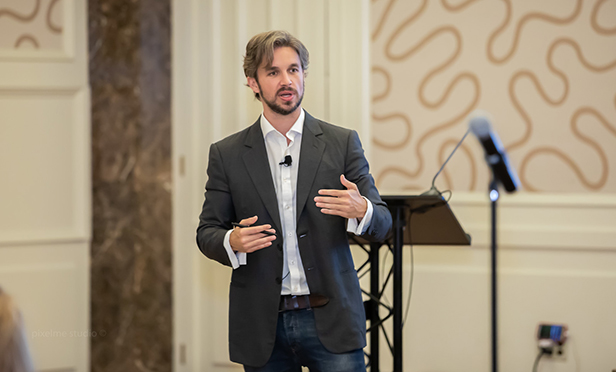 James Scott, IREM Innovator-in-Residence and Lead Researcher for the MIT Real Estate Innovation Lab
James Scott, IREM Innovator-in-Residence and Lead Researcher for the MIT Real Estate Innovation Lab
SAN FRANCISCO – Weaving automation into real estate management is well worth the wait, an industry expert told a crowd at the 2019 IREM Global Summit.
James Scott, IREM's Innovator-in-Residence and lead researcher at the MIT Real Estate Innovation Lab, cautioned that the synthesis will come in bits and parts over time. "It can be slow, definitely," he said. "It can be hard for property managers and owners to take the risk of buying into this new technology."
Part of the problem is that the concept is a little harder to define. Automation, Scott said, would not look like the "big crazy robots" seen in futuristic films. Instead, it would be focused more on processes.
"One of the better definitions is that automation is the creation and application of technology to make an apparatus or system operate automatically," he said. "From that, it filters off into two different directions: robotics and machine learning/artificial intelligence. Those are the areas where we're seeing the most activity."
A sector that automation has seen some traction has been in property management, where industry professionals have deployed it for tasks such as package delivery and management of parking structures, to give two examples. He says the goal is to integrate the automated function into a family of technologies working in harmony.
While Scott notes this may seem daunting, he maintains a bullish outlook on the implementation. "Automation is nothing to shy away from," he said. "The last three years alone, each one has been bigger than the last. There is a huge amount of money there. You've got to get property managers to really understand which companies are creating value, which is a very difficult thing to do."
One only has to look at Jones Lang LaSalle and CB Richard Ellis, Scott pointed out, as two giants that are using automation to become more efficient. One audience member echoed this experience, noting that today's advancements allow his staff to spend about 70 percent more time with customers.
That's the point, he said – a better, more personalized connection with tenants. "They're moving forward," he said, "and it's getting better all the time."
© Touchpoint Markets, All Rights Reserved. Request academic re-use from www.copyright.com. All other uses, submit a request to [email protected]. For more inforrmation visit Asset & Logo Licensing.






